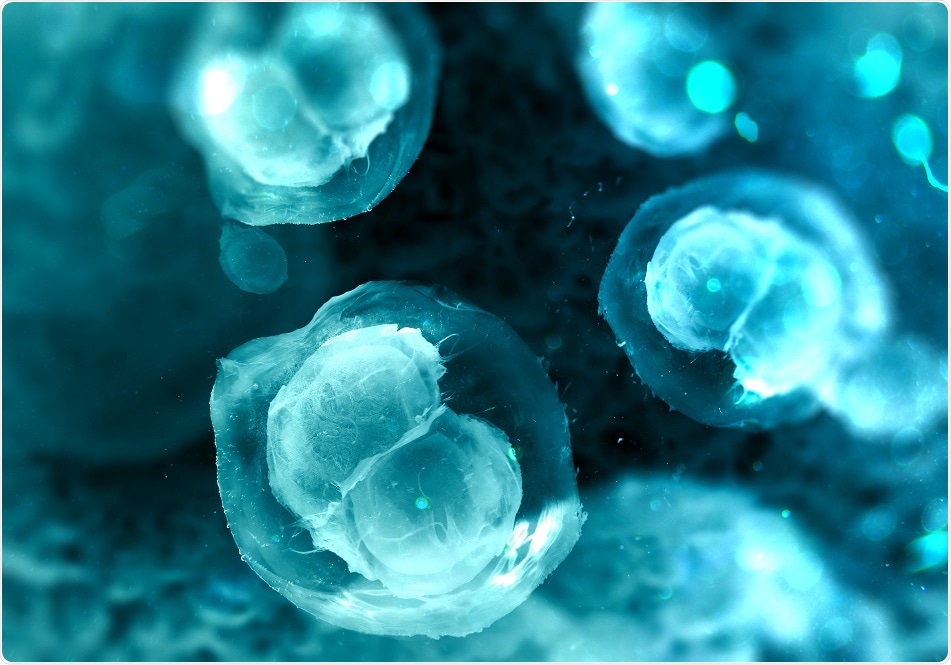Nov 8 2017
A new study conducted at The Scripps Research Institute (TSRI) has found a compound called diamidophosphate (DAP), which is expected to have played a vital role in the origins of life on Earth.

Credit: Andrii Vodolazhskyi / Shutterstock.com
The hypothesis of this origins-of-life study, which was published in Nature Chemistry recently, stated a chemical reaction known as phosphorylation to be crucial in the assembling of three key factors in early life forms—(a) short nucleotide strands for storing genetic information, (b) short peptide (amino acids) chains for carrying out the main work of cells, and (c) lipids for forming encapsulating structures like cell walls.
However, no phosphorylating agent, that could possibly be present on early Earth, had been identified with the ability to produce these three categories of molecules simultaneously under the same realistic conditions.
According to Ramanarayanan Krishnamurthy, the senior author of the study and an associate professor of chemistry at TSRI, the phosphorylation chemistry which was put forth by the team could have given rise to cell like structures, ogliopeptides and oglionucleotides all in the same area, which may have allowed other chemistries that were formerly impossible, potentially resulting in the first simple, cell-based life forms.
The study is part of a continuing effort by researchers across the world to identify possible routes for the epic voyage from pre-biological chemistry to cell-based biochemistry.
Prior studies had explained chemical reactions that may have facilitated the phosphorylation of pre-biological molecules on the early Earth; however, such situations had involved diverse phosphorylating agents for various molecules. Also, the environmental reactions involved differed and often remained uncommon.
It has been hard to imagine how these very different processes could have combined in the same place to yield the first primitive life forms".
—Dr. Ramanarayanan Krishnamurthy.
The team primarily showed that, under various temperatures and conditions, DAP was capable of phosphorylating the four nucleoside building blocks of RNA in a paste-like state or in water separately.
When a catalyst called imidazole—a simple organic compound that is expected to be present on the early Earth—was added, DAP's activity made the phosphorylated building blocks to appear as short RNA-like chains.
In addition, fatty acids and glycerol—the lipid building blocks—were proficiently phosphorylated by DAP with imidazole and water; this resulted in the self-assembly of primitive versions of cells known as vesicles that are small phospholipid capsules.
At room temperature, DAP in water also phosphorylated the amino acids glycine, glutamic acid, and aspartic acid. It then aided these molecules to form short peptide chains.
Prior research led by the team had indicated that a variety of simple sugars could be efficiently phosphorylated by DAP and thereby aid in building-up of phosphorus-containing carbohydrates that are thought to be involved in early life forms.
Krishnamurthy commented that it is hard to prove the importance of DAP in initiating life on Earth several billion years after the fact; however, vital features of the molecule's chemistry still exist in modern biology.
He explained that DAP is phosphorylated through the same phosphorus–nitrogen bond breakage under similar conditions as in protein kinases that are abundant in modern life forms. The phosphorylation chemistry of DAP also has a close resemblance to that seen in reactions occurring at the heart of the metabolic cycle of every cell.
In collaboration with early-Earth geochemists, the author further aims to identify potential DAP sources or phosphorus–nitrogen compounds with similar activities, as were present on Earth before life arose.